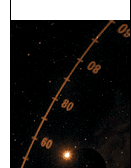

 |
|||
|
Page 1 | 2 A Golden Year for the Department of Religion - Page 2 5
Decades of Religious Studies
Beginnings Clyde Holbrook made his academic home at Oberlin for 26 years, designing and managing the Department of Religion from 1951 until 1977. He believed in a critical examination of religion, even admitting the possibility that atheists might be right. He also allowed for an empathetic approach to religion–one that recognized its ennobling and redeeming qualities. This stance became the hallmark of religious study at Oberlin, but it also became the prevailing ethos of religious studies in America, of which Holbrook was one of the pioneers. In Holbrook's first three years, he taught most of the College's religion courses. Some of Oberlin's classic religion courses appeared soon thereafter: Holbrook's trademark Introduction to Religion, in which he laid out his approach to the religion as reflected in Christianity, non-theistic Humanism, Hinduism, and Confucianism; Life and Teachings of Jesus, one of the most popular religion courses in College history; Christian Ethics, which evolved into Moral Issues under Ed Long; and Modern Religious Thought. Consolidations As new faculty members were appointed, Holbrook gradually yielded curricular areas to others, and by the mid-1960s, much of the curriculum was in place. Although weighted toward Christianity (and its Jewish antecedents), courses were taught from Holbrook's distinct non-confessional standpoint. The Christian component was consolidated with the arrival of Tom Frank in Biblical studies in 1964 and Grover Zinn in the history of Christianity in 1966. Nate Greenberg of the classics department taught an annual course on the history of Judaism, and the study of Judaism and Islam expanded with the creation of the Judaic and Near Eastern Studies Program in the early 1970s. That program operated outside the Religion Department, but many courses were cross-listed. Expansion of Asian Studies If the first phase of the department's development consolidated the area of western religions, the second phase, up to the early 1970s, expanded the non-western ones. This area was established in earnest when Don Swearer arrived in 1965 to teach Asian religions specifically. In 1970, the position grew into two, one emphasizing South Asian religions and the other East Asian. By the early 1970s, the general shape of the religion department was set. It continued in this configuration for the next two decades, offering areas of concentration in Biblical studies, modern religious thought, ethics, the history of Christianity, South Asian religions, and East Asian religions. Courses in Judaic and Near Eastern studies were cross-listed. Diverse Voices The department's third phase began in the late 1980s and early 1990s. Marked at first by a new position in Islam, which completed the unfinished business of diversifying religious representation, the department next recognized the need to include diverging voices within religions. New courses focused on the African American religious experience and, more recently, women and religion. It also diversified Introduction to Religion, which is taught now as a forum for diverse issues and subject matters. The
study of religion has not been driven by a single organizing principle.
Subfields have been defined, sometimes by disciplinary approach,
geographical location, historical periodization, or specific religious
tradition. Students gradually have become more aware of other religions
in the past 50 years. But many also have less understanding of the
historically formative religions of American culture. This situation,
too, has forced the department to modify how and what is presented
in courses. As a field, religious studies is still a work in progress. Page 1 | 2 |
|||
|
back to top |
